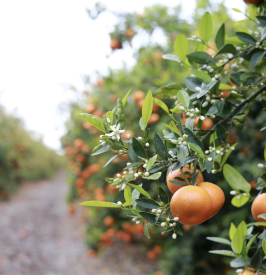The University of Minnesota’s website proudly profiles one alumnus with a powerful headline – “The man who saved a billion lives.”
The article on Norman Borlaug details how the agronomist started the “Green Revolution” by developing new varieties of wheat to boost yields and feed starving people around the world. His efforts to enhance agricultural productivity amid global famine earned him a Nobel Peace Prize in 1970, a Presidential Medal of Freedom in 1977, and the Congressional Gold Medal in 2007.
Dr. Borlaug may be the face of productivity gains in agriculture, but he is hardly alone.
Groundbreaking advancements in mechanization, fertilizers, seed science, chemistry, genetically modified crops, and data management have helped the American farmer produce more calories on fewer acres. And new advancements are being made every day.
U.S. farm productivity has nearly tripled since 1948, according to the U.S. Department of Agriculture (USDA), even as land and labor needed for production has declined. The USDA measures this efficiency using Total Factor Productivity (TFP), which compares growth of farm outputs relative to inputs.
“From 1948 to 2017, TFP increased at an annual rate of 1.47%,” the USDA’s Economic Research Service noted in a July 2021 publication. “This growth was made possible by a surge in total output at a growth rate of 1.53% per year while holding total inputs nearly constant.”
In other words, farmers are producing more food, fuel, feed, and fiber on less land, while keeping crop inputs relatively flat – all of which is good for society and the environment.
The American Farm Bureau Federation (AFBF) describes agricultural innovation in even simpler terms. It notes that the modern-day U.S. farmer feeds 166 people – 106 in America and 60 abroad – compared to just 26 people 60 years ago.
It’s little wonder that undernourishment in developing countries has more than halved, falling from 34.75% to 12.9% between 1970 and 2015, according to data from the Food and Agriculture Organization (FAO) of the United Nations.
U.S. agriculture’s amazing record of productivity gains is one of the main reasons we invest in farmland. Enhancing on-farm efficiency not only saves lives, but it also makes a compelling economic case for farmland as an investment class.
Green Street Advisors, which produced an investment primer on U.S. farmland in 2021, detailed how U.S. farm productivity supports overall farmland returns.
“Unlike traditional real estate, farmland values have experienced a nearly uninterrupted rise over the past ~30 years thanks to continuing improvements in productivity growth,” the report explained. “Historical productivity growth was driven by the transition to mechanical power and the application of nutrients. Future productivity growth will be driven by technology (improved genetics, precision agriculture, etc.).”
In addition to its history of steady appreciation, farmland provides income-producing potential in the form of rent from farmers.
And a main factor in determining rental rates is farmers’ economic returns, which are largely based on commodity prices and productivity, often measured in bushels per acre.
Improved productivity is a big reason why farmers’ returns have proven to be relatively stable over time – even during recessions, according to Green Street. Plus, improving crop yields provides farmers a natural hedge to price fluctuations.
“While productivity can fluctuate year-over-year based on extraneous events (climate, etc.), the steady and sustained growth of productivity over the years has been a key element of stable farmer cash flows,” the Green Street report stated.
In sum: U.S. farmers are feeding more people than ever before thanks to science and technology, and those efficiencies are driving economic gains, too.
That’s the power of productivity.



